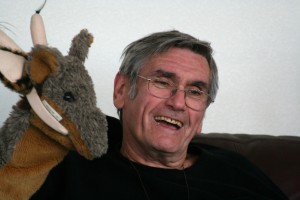
Speak peace in a world of conflict
Hieronder volgt een deel uit dit boek door Marshall Rosenberg, PhD dat ik heb overgenomen uit de nieuwsbrief van PuddleDancer Press.
Het volledige artikel is te lezen op:
http://www.nonviolentcommunication.com/freeresources/2015-05-enl.htm
 Earlier (in this book) I outlined that the purpose of Nonviolent Communication is to create a connection that allows compassionate giving to take place. And I clarified the basic literacy that’s necessary to live this way, which is a literacy of feelings, needs, requests, and how to express them in a way that is a gift to other people so they can see what’s alive in us.
Earlier (in this book) I outlined that the purpose of Nonviolent Communication is to create a connection that allows compassionate giving to take place. And I clarified the basic literacy that’s necessary to live this way, which is a literacy of feelings, needs, requests, and how to express them in a way that is a gift to other people so they can see what’s alive in us.
It’s a gift when they can see what would make life more wonderful because it gives them a chance to contribute willingly to our well-being. And I talked about how through empathic connection we can receive that gift from other people, even when they’re using a language that is quite violent.
When we look at how Nonviolent Communication can contribute to change, remember this: We want people to change because they see better ways of meeting their needs at less cost, not because of fear that we’re going to punish them, or “guilt” them if they don’t. (In this excerpt), we’ll look at how that change can occur within ourselves (when we are acting) in ways that are not in harmony with our values.
- Reflecting on Past Mistakes
- Catching Your Self-Talk
How to Make Life More Wonderful
This is how we show people how to use Nonviolent Communication within themselves. When we do something we don’t like, the first step is to mourn, to empathize with ourselves about the need of ours that wasn’t met. And very often we’ll have to do that by “hearing through” the judgments we have been programmed to make. In this way we can actually make good use of our depression, guilt, and shame.
We can use those feelings as an alarm clock to wake us up to the fact that at this moment we really are not connected to life—life defined as being in touch with our needs. We’re up in our head playing violent games with ourselves, calling ourselves names.
If we can learn how to empathically connect with the need of ours that wasn’t met, and then look at the part of our self that was trying to meet the need, we’re better prepared to see what’s alive in ourselves and others—and to take the steps necessary to make life more wonderful.
Often it’s not easy to empathically connect with that need. If we look inside and say what was going on in us when we did that, very often we say things to ourselves like “I had to do it; I had no choice.” That’s never true! We always have a choice. We don’t do anything we didn’t choose to do. We chose to behave that way to meet a need.
 A very important part of Nonviolent Communication is this recognition of choice at every moment, that every moment we choose to do what we do, and we don’t do anything that isn’t coming out of choice. What’s more, every choice we make is in the service of a need. That’s how Nonviolent Communication works within us.
A very important part of Nonviolent Communication is this recognition of choice at every moment, that every moment we choose to do what we do, and we don’t do anything that isn’t coming out of choice. What’s more, every choice we make is in the service of a need. That’s how Nonviolent Communication works within us.
(Excerpted from, Speak Peace in a World of Conflict)








































